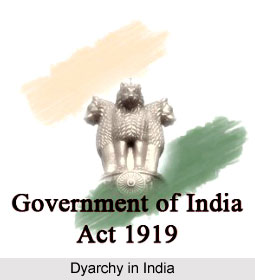 With the arriving into power of the Government of India Act 1919, local self-government became a `transferred` field under democratic ministerial control. Government of India no longer brought out any direction for regional governments and each province was permitted to grow local self-institutions, according to provincial demands and necessities. Under the Scheduled Taxes Rules, the taxes which could be imposed by local bodies were divided from those which fell inside the capability of regional governments. The Indian ministers could not do much work in the field of local self-government, due to deficiency of funds, since finance was a `reserved` issue under the jurisdiction of an Executive Councilor.
With the arriving into power of the Government of India Act 1919, local self-government became a `transferred` field under democratic ministerial control. Government of India no longer brought out any direction for regional governments and each province was permitted to grow local self-institutions, according to provincial demands and necessities. Under the Scheduled Taxes Rules, the taxes which could be imposed by local bodies were divided from those which fell inside the capability of regional governments. The Indian ministers could not do much work in the field of local self-government, due to deficiency of funds, since finance was a `reserved` issue under the jurisdiction of an Executive Councilor.
In May 1930, the Simon Commission cited the massive financial powers implemented by local bodies. It observed that the village panchayats had not depicted any noticeable progress in U.P. Bengal and Madras. The commission proposed the retrograde step of elevating the command of provincial governments over local bodies in the sake of keener skilfulness and quoted the example of England "by numerous administrative devices, by inspection, by audit, by giving of grants-in-aid on conditions ensuring efficiency and by insisting on standards of competence in the municipal staff, the local Government Board and its successors, the ministry of Health have steadily raised the standard of administration in local authorities". Commenting on the deprived financial condition of local organisations, the Commission negatively remarked on the unwillingness of the elected members to enforce taxes and stated that the management of finances of local organisations had degenerated after the introduction of the Reforms of 1919 and the sloppiness could not be effectively corrected by insufficient powers of audit, owned by regional governments.



















